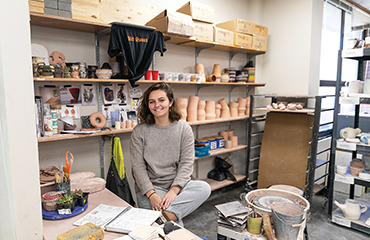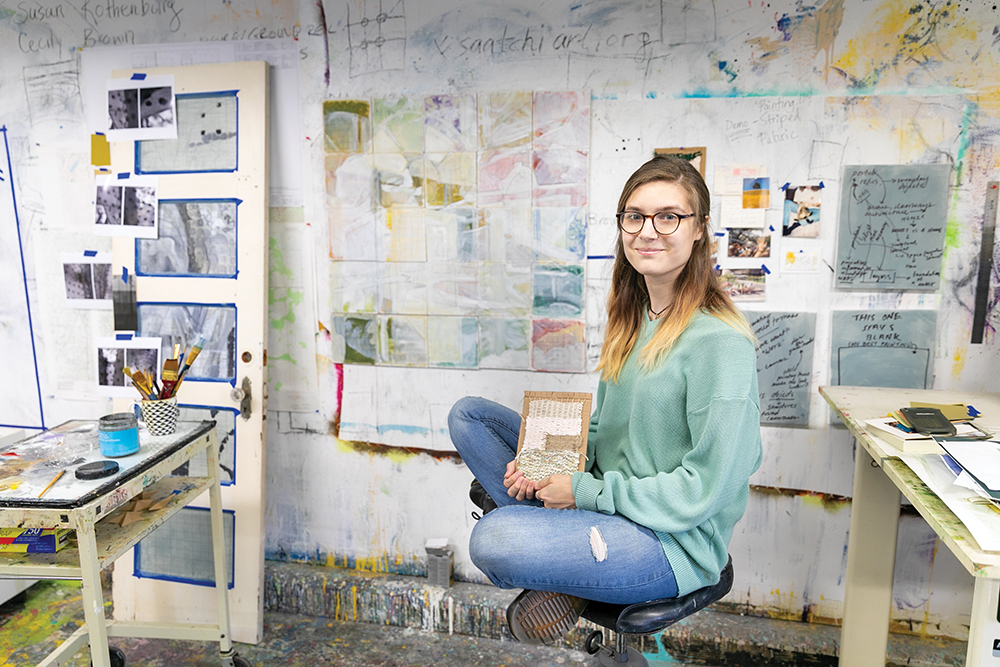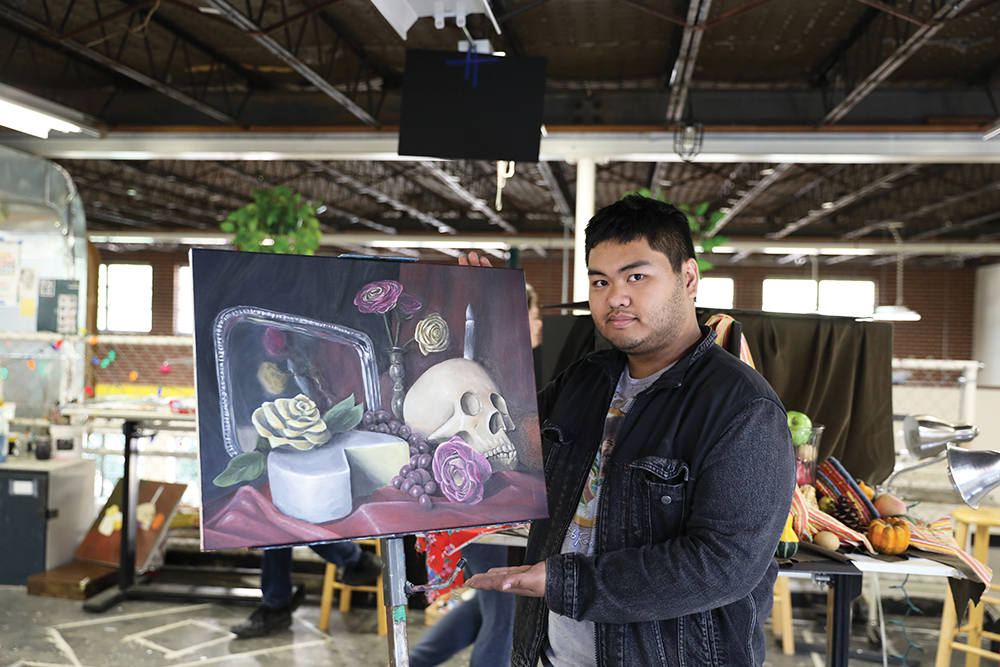
Lander University's Art Department recently unveiled a new professional art degree for the University's growing academic palette.
And the Bachelor of Fine Art (B.F.A.), which allows students to choose a concentration in either 2D or 3D studio, is already preparing art majors for what follows after Lander.
While 2D artwork is generally presented on a flat or nearly flat surface (traditionally painting, drawing, photography and print-making) and has height and width, 3D art (such as ceramics and sculpture) occupies space and includes physical depth. In Lander's B.F.A. degree program, students take more advanced art studio classes and spend more time mastering the studio techniques in their chosen major. The new art degree also gives art majors more opportunity to gain the experience needed to pursue graduate school or a career as a fine artist.
"Most B.F.A. programs are set up so that a student gets a degree in a specific medium, such as painting, printing, ceramics, etc. Our approach is about 2D and 3D art as a mindset or direction," said Sandy Singletary, associate professor of art and interim dean of Lander's College of Arts and Humanities. "That means that, while students might work in three dimensions, they could use a range of materials that could even include those from traditionally 2D media, such as paint or photography. Likewise, a 2D studio major might create flat artworks using traditionally 2D and also 3D materials, such as clay or steel."
With an emphasis on broader exposure to different mediums early on, and a concentration in an area of interest in the final year, the Lander approach is quite different from most other B.F.A. programs nationwide.
"During their freshmen and sophomore years, all of our students take introductory studio classes and the first-level courses of all our disciplines (painting, photography, graphic design, ceramics and sculpture), before declaring the direction of their B.F.A.," Singletary said. "For the junior and senior years, 2D B.F.A. students focus on creating artwork in two dimensions. Likewise, 3D B.F.A. students will focus on creating artwork in three dimensions."
All B.F.A. degree programs allow students to consider combining materials from different disciplines in their artworks. This hybrid approach to media aligns with the direction of international con-temporary fine art.
For Ashley Dever, a senior 3D studio major from Lexington, the early exposure to the different mediums has resulted in her exploring new ways of creating art.
"When I first came to Lander, I was set on being a 2D artist. After being able to take courses in sculpture, ceramics and advanced drawing, though, it became evident to me that I was more interested in the processes that lend themselves to 'messy methods,' where high-powered and heavy equipment were involved," she said.
"I found something familiar with it, as I could relate to the means of making it, since I had always seen my dad work with these tools and materials. I felt at home."

Chloe Compton, a junior 2D major from Greenwood, had a similar experience.
"After transferring to Lander, I was able to work in a more interdisciplinary way. I switched from 3D art to 2D art because I found that I was more interested in surface - and I think exploring that in a two-dimensional way is important to start with, before going back to working three-dimensionally," Compton said.
The new degree program also requires art majors to spend more time in the studio.
"The program is more rigorous. Every three hours of class requires three hours of studio time outside of class," explained Singletary, "and that has changed the energy of the whole department."
Since each three-credit studio course entails six hours of class each week, it means each student spends upwards of six additional hours in the studio working on projects outside of class each week.

For Victor Santos, a junior 2D art major from Cheraw, the increased studio time taught him valuable time management skills.
"My foundation courses were intense, and I had many all-nighters to make sure my projects were finished on time," he said. "The work was conceptually straightforward, but I had to learn how to manage my time effectively."
Yet another benefit of this new degree program is the increased development of camaraderie among art majors.
"Not only does the exposure to the other mediums create a sense of transparency in the creative process, it also ensures that everyone is at the same level, regardless of exposure or practice in art making," said Dever. "The (freshmen) foundation classes are where you meet everyone who comes in the same year as you, and it's likely that these students will follow you through to graduation. These courses offer a unique bonding experience to those who are willing. Some of my closest friends were made in those classes, and we have continuously cheered each other on for the past four years, even as we have physically been in separate courses to study our preferred mediums. I wouldn't trade those first few years for anything."
Because the B.F.A. in Studio is a rigorous professional degree - and is the standard professional degree in the field of visual art - instructors are making sure students are aware of the business aspect of the field.
"I want all of our graduates to pursue art in the way they want, and that includes being prepared to use entrepreneurial and creative problem-solving skills to pursue a professional art career, because there are so many ways to do it," said Singletary.
From studio artist, fine craftsperson, public art sculptor or professional photographer, to gallery entrepreneur, museum curator, art instructor or designer, the far-reaching field of careers for graduates with a B.F.A. in Studio is vast. Graduates are also prepared to pursue Master of Fine Art (M.F.A.) or Master of Art in Teaching (M.A.T.) graduate degree programs.
"You have the choice of how you want to pursue your art. You can go home at the end of the day and casually paint to feed your creative spirit, or you can build your career around it," said Singletary.
"Rather than a 'Jack of all Trades' degree, students pursuing the B.F.A. are mastering their craft, and we're emphasizing the creative entrepreneurial aspect, because there are so many career options in the worldwide creative economy."
This story is featured in the Fall 2019 edition of Lander Magazine. Read more at www.lander.edu/magazine.